David Kirke and the Pool Plantation
The Kirke family, particularly Sir David Kirke, his wife, Lady Sara Kirke, and their three sons, are much underrated players on the stage of Canadian history.
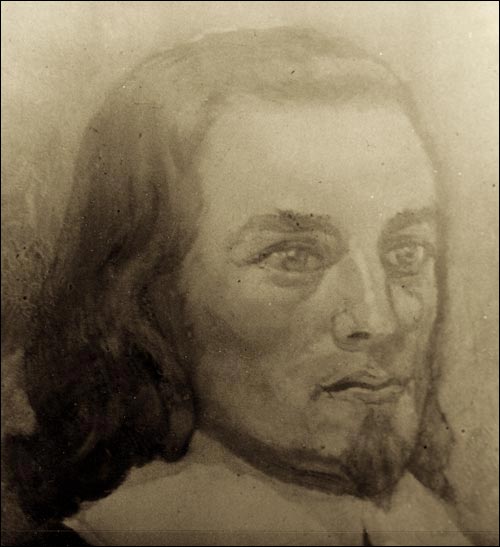
In 1628 Sir David and his brothers combined to capture both Nova Scotia and Québec from the French, the latter surrendered by Champlain himself.
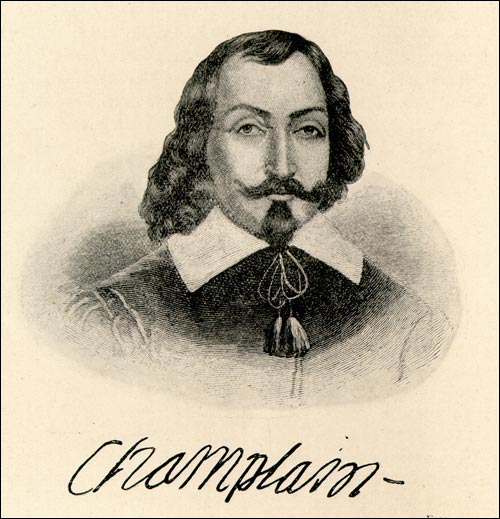
Under the terms of the ensuing treaty these territories were returned to France, and in 1637 a syndicate headed by Sir David was granted the entire island of Newfoundland in recompense for their efforts on behalf of the crown. At the same time Sir David was granted a coat of arms, which survives today as the coat of arms of the province.
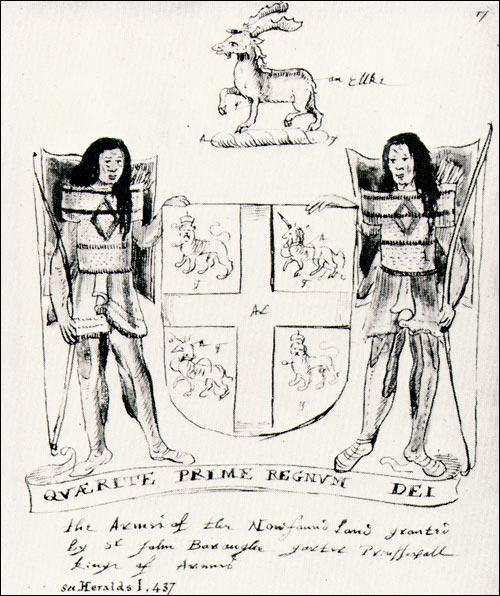
Litigation
Sir David was soon to take advantage of this grant. In 1638 he arrived at Avalon, dispossessed the Calverts' representative and established residence in the mansion house. Since Kirke was governor of all of Newfoundland and chose to establish himself at Ferryland, it is not altogether improbable to see Ferryland as Newfoundland's first capital. Sometime not long after the Kirkes' arrival, the name Avalon disappeared and the settlement began to be referred to as the Pool Plantation, perhaps in a conscious effort to obliterate the memory of Calvert's venture. The Calverts did not forget Avalon, however, and legal action between the two families continued intermittently for more than four decades.1
Sir David Kirke was an unrepentant Royalist, and after the Civil War he was called to England to account for his activities in Newfoundland. While he was there, Cecil Calvert, second Lord Baltimore, took the opportunity to press his suit over the proprietorship of Avalon.
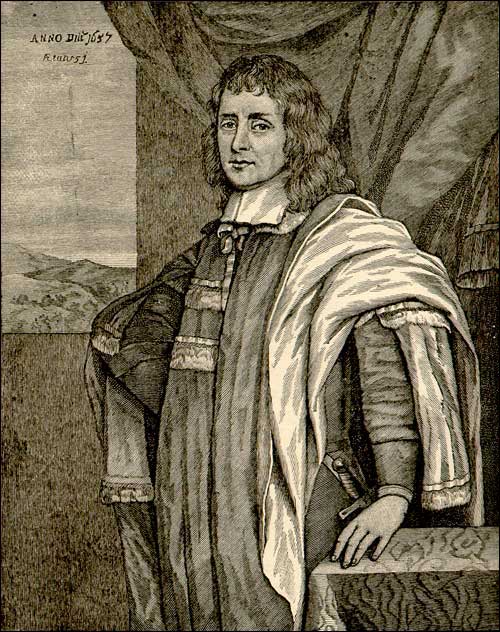
Kirke lost this round of litigation and died in prison. Sara Kirke and her sons paid no heed to this judgement, however, and continued to reside at Ferryland and conduct business as usual from the Pool Plantation.
Lady Kirke
Lady Kirke must have been a remarkable individual. After the death of Sir David she managed affairs at the Pool Plantation and became one of the most successful fish merchants on the English shore.2
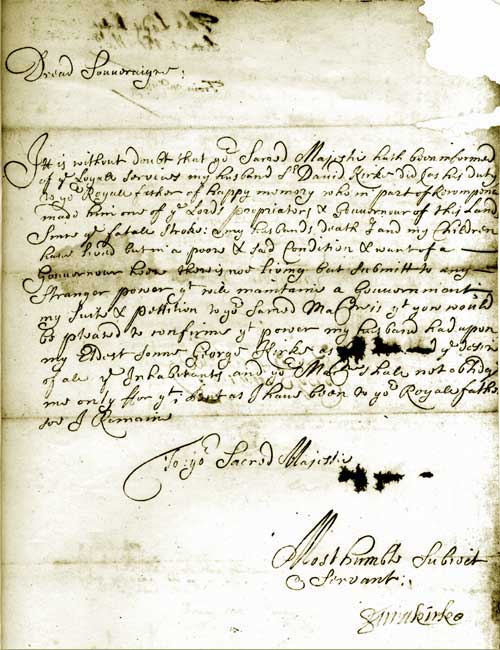
It reads:
Dread Sovereign:
It is without doubt that your Sacred Majesty hath been informed of the loyal services my husband Sir David Kirke did (as his duty) to your royal father of happy memory, who in part of recompence made him one of the Lords Proprietors and Governor of this Land. Since the fatal stroke [execution of Charles I in 1649] and my husband's death [1654] I and my Children have lived but in a poor and sad condition and want of a governor here, there is no living but submit to any stranger power that will maintain a government. My suit and petition to your Sacred Majesty is that you would be pleased to confirme that power my husband had upon my eldest son, George Kirke, as...the desire of all the inhabitants and your Majesty shall not oblige me only for it. But, as I have been to your royal father, so I remain,
To your Sacred Majesty's
Most humble subject
and servant,
Sara Kirke
Indeed, according to census figures from the 1660s and 1670s, Lady Kirke owned more stages, boats and train (cod liver oil) vats and employed more servants (fishermen and fish processors) than any other planter on the English shore, including her sons. If Lady Kirke was not the first Newfoundland proprietor to make the fishery profitable, she was almost certainly British North America's first woman entrepreneur.
Lady Kirke died sometime in the early 1680s and, according to local legend, lies buried somewhere on the Ferryland Downs, just east of her Pool Plantation. Her sons survived her and ran successful enterprises at Ferryland and elsewhere on the eastern Avalon until 1696, when a French raid destroyed most of the English settlements. The three Kirke brothers were captured and imprisoned at Placentia, probably with the thought that they could be ransomed. Two died at Placentia and the third died at St. John's a short time later, thus ending the Kirke period in eastern Newfoundland.
1. Benger, Mary. 'Mary Benger [Mary Kirke]; 23 March, 1708: Deposition.' Great Britain, PRO, Colonial Office, CO 194/4 (62), 210. CNS microfilm. Transcribed by P.E. Pope.
2. Kirke, Sara. '[Lady] Sara Kirke; 1660: Letter to Charles II [from Ferryland].' British Library, Egerton ms 2395, 258. MHA 16-C-1-041. Transcribed by P.E. Pope.




